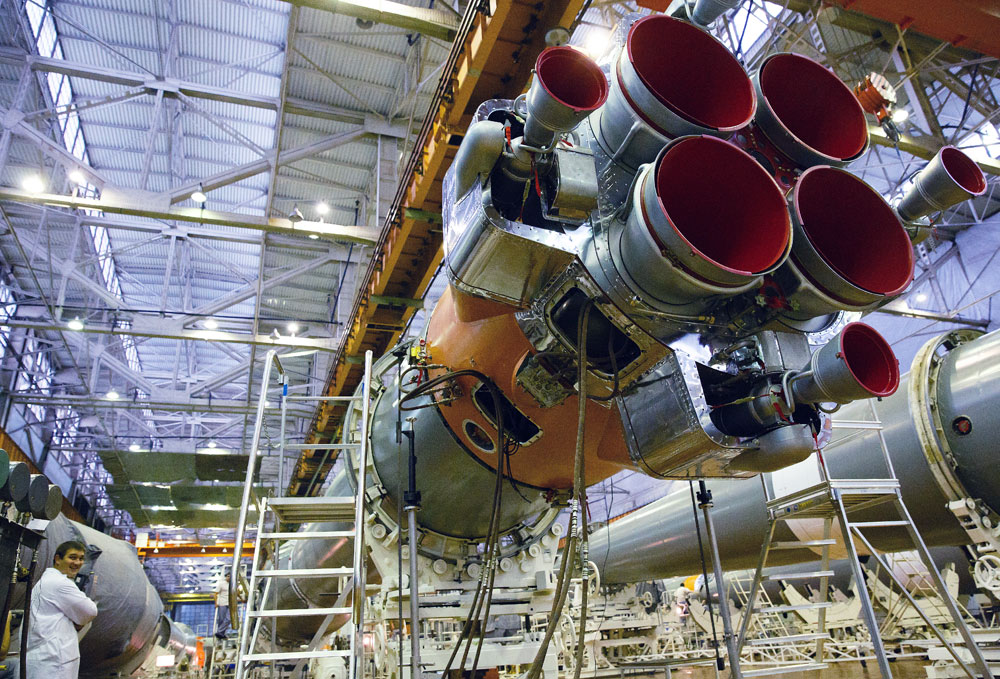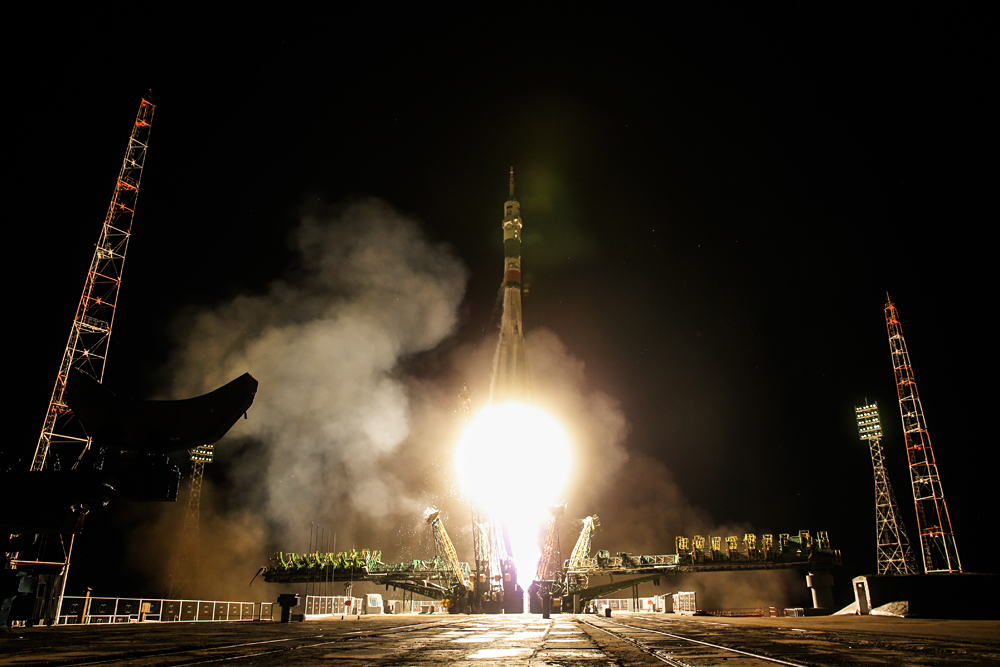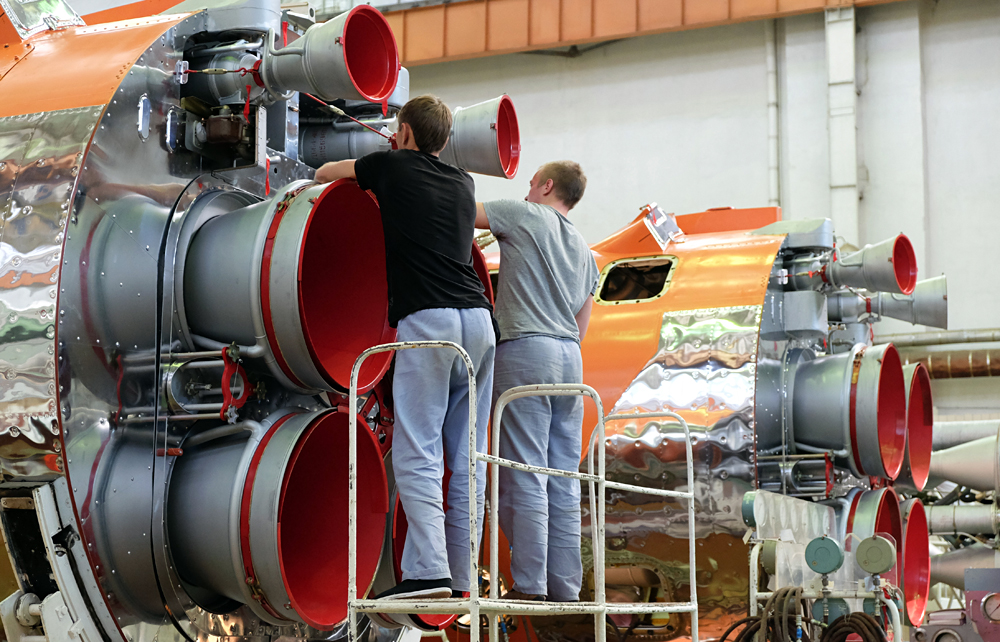Now that’s Progress: The story of Russia’s leading satellite producer

Part of a rocket booster stage in the assembly room at TsSKB Progress State Research and Production Space Center.
Pyotr Gridin / TASSSince August 2014, Russia has been implementing a new large-scale program to create an integrated system of military satellites in orbit. If accomplished, the country will join the world's leaders in the number of vehicles launched into space.
On March 13, 2016, yet another Russian satellite, whose tasks include the detailed observation of the earth's surface, was launched from the Baikonur Cosmodrome in Kazakhstan.
 Source: Sergei Savostyanov/TASS
Source: Sergei Savostyanov/TASS
Both the satellite and launch rocket were developed by the Progress Rocket and Space Center, one of the largest enterprises in the Russian military and space industry.
From small vessels to spy satellites
Today's Progress Rocket and Space Center is a huge corporation, which includes companies located in different regions of Russia. In addition to the main plant and the design bureau, based in the city of Samara on the Volga River, Progress includes manufacturing facilities in the Moscow Region, Ryazan and Kazakhstan. Together, they form a multi-branched industrial complex whose size is illustrated by the number of employees – more than 20,000.
The main products are space launch vehicles, civilian aircraft, small vessels and even equipment for sawmills. However, the plant's most classified products are satellites. Many of them, which are used for research purposes and in the civil sphere, are manufactured and sold quite openly, but everything connected with military vehicles is often shrouded in secrecy.
 Assembling Soyuz-2 launch vehicles at the Progress State Research and Production Space Center. Source: Nikolay Hiznyak/RIA Novosti
Assembling Soyuz-2 launch vehicles at the Progress State Research and Production Space Center. Source: Nikolay Hiznyak/RIA Novosti
It is the engineers at Progress that have developed and launched production of the satellites that form the basis of Russia's military orbital group, the pride of which are the Persona-class reconnaissance satellites.
The importance of the mission fulfilled by the Samara engineers is illustrated by the fact that the satellite project has been commissioned by the Russian Armed Forces' Central Intelligence Directorate.
Operating at a height of almost 470 miles above the Earth, Persona has replaced the Samara engineers' previous developments – the Neman and Kobalt satellites. The use of new technologies in its design have allowed its life in orbit to be extended several times. Its service life is now 10 years, which is comparable to that of its American counterparts.
The introduction of the developments made during the creation of Persona allowed the Samara engineers to create a fundamentally new vehicle, which will significantly increase the capabilities of Russia's satellite constellation in the future.
With a mass of four tons, the Bars-M satellite is not only almost twice as light as Persona, but is capable of taking pictures of tiny objects of less than one meter in diameter. However, the precise characteristics of Bars are classified.
Pages of history
Over the years, the Samara plant's design bureau has created more than 20 satellite designs suitable for use in the military sphere. However, when it was originally founded, the facility was designed to manufacture completely different products.
Its history began with the establishment of a new bicycle factory in Moscow in 1894, which gradually mastered the production of motorcycles, sleighs and cars. It was only on the eve of the First World War that the Duks company launched the production of aircraft.
Between the 1920s and the 1960s, the plant mainly produced planes. Nationalized after 1917, the company was named the State Aircraft Factory No. 1. In 1941, with Nazi forces advancing on Moscow, its facilities were evacuated eastward from the capital to the banks of the Volga River. This is how the history of the factory in Samara began.
The new location in the interior of the country had a number of strategic advantages, primarily security. It was largely for this reason that the Samara plant was selected in 1958 as one of the centers for the implementation of the Soviet space program. This required a complete restructuring of the plant – the creation of large workshops and test sites.
The Progress team took part in all national space exploration programs. Several stages of the launch vehicle that took the rocket bearing first cosmonaut Yuri Gagarin into space were designed right there in Samara, as well as 27 types of Soviet civilian and military satellites.
After the collapse of the USSR, the company went through a stage of conversion, launching a civilian product line. However, during the last 15 years the military space component of its activity has come to the fore again.
The plant is now facing serious difficulties, since the Western sanctions imposed on Russia over Moscow’s involvement in Ukraine have resulted in the lack of imported components for satellites. However, a federal import substitution program gives it a good chance of successfully overcoming this.
Subscribe to get the hand picked best stories every week
All rights reserved by Rossiyskaya Gazeta.
Subscribe
to our newsletter!
Get the week's best stories straight to your inbox
